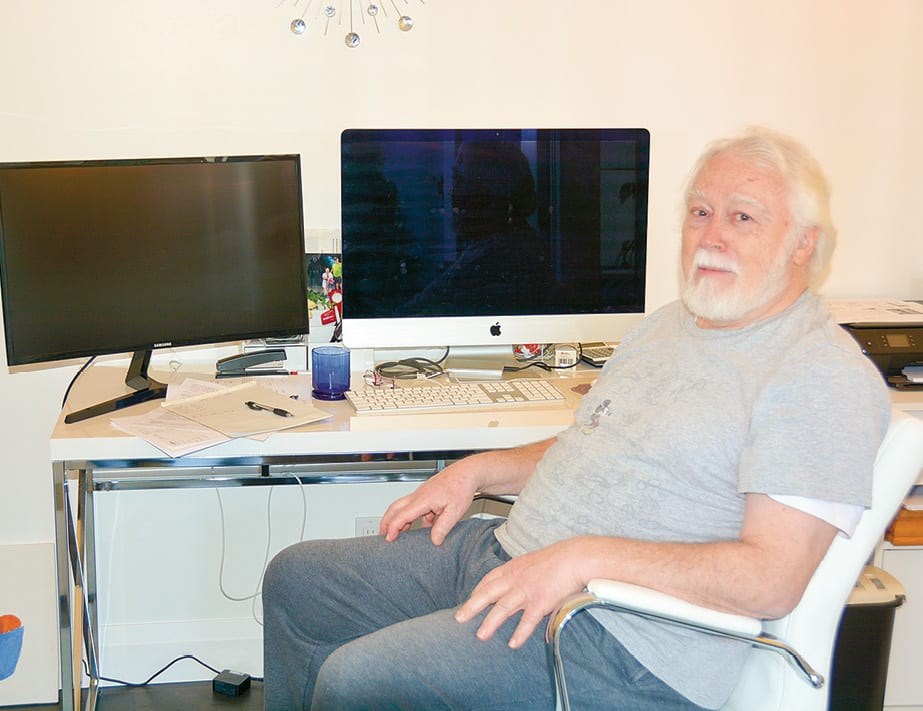Brock Earth Sciences professor part of international team researching historic extinction event
Four billion, give or take a few hundred million. That’s the age of this ball of rock we call Earth, orbiting the Sun at 67,000 miles per hour.
Our interstellar home has undergone some unprecedented change in the past couple hundred years, due to our propensity for burning fossil fuels such as coal, oil, and natural gas, which release greenhouse gases into the atmosphere. The planet heats up, polar ice melts, oceans rise and become acidic and oxygen-depleted, and species start to die off.
The research of Brock University Earth Sciences professor and Pelham resident Uwe Brand is focused on what happened 250 million year ago, long before the arrival of the dinosaurs. But he cautions that we are at risk of a future extinction event if we don’t break our dependence on fossil fuels as an energy source.
Brand is a world-renowned authority on an episode in earth history called the Permian-Triassic Mass Extinction, or the “Great Dying,” when epic proportions of life on land and in the oceans vanished, and he says that there are some striking similarities between then and what's happening today.
Brand was part of an international team of scientists who published a study in the journal Natural Geoscience last fall, which CBS News said, “provided a conclusive roadmap of the geochemical processes that led to the massive biotic extinction.” Earlier this month, CBS featured Brand’s research as part of an on-air news broadcast, seen by millions.
“When our paper came out in October 2020, the European press was all over it, in part because most of the participating scientists on the team were from either Germany or Italy. I was the lone North American. The story didn’t get much traction on this side of the Atlantic until CBS got wind of it and approached me,” said Brand.
Born in Germany, Brand moved to Canada with his parents almost 60 years ago, settling in Toronto. He earned a bachelor’s degree at Waterloo, a master’s at Missouri, and completed a PhD at the University of Ottawa. During his doctoral studies, he spent time doing geological research in the Arctic, on Cornwallis Island. Brand has been a Brock prof for 40 years, during which he and his wife (a retired environmental scientist) moved to Pelham and have resided on Pelham Street for the past 25 years.
Brand said that scientists recognize a number of mass extinctions—about five in total.
“Even if you say that it's the largest mass extinction, it’s not as dramatic as calling it ‘the Great Dying.’ Then it's mysterious,” he said with a laugh.
Brand likened the Great Dying to a ‘perfect storm,’ not a single game-changing event, such as the asteroid that killed the dinosaurs 65 million years ago. This process was more like a domino effect, a series of inter-related events.
If you cannot get away from these harmful conditions, you are either going to die, or you are going to adapt
"These are not individual and separate causes, but they all acted together, in concert, and that is why I call it the perfect storm. The Earth got hit with temperature, acidification, and then finally the knock-out punch came from deoxygenation,” Brand told CBS News.
“It's like natural selection, being pushed to the extreme,” he told the Voice. “If you cannot get away from these harmful conditions, you are either going to die, or you are going to adapt.”
According to Brand’s research, a rise of greenhouse gases 250 million years ago led to the disappearance of most life on Earth. Using carbon isotope data and a sophisticated model, the researchers reconstructed the likely chain of events that killed almost all life on Earth.
Brand said that recent volcanic eruptions, such as the ones in Iceland and Indonesia, cause the opposite of global warming. They cause global winter, because they emit huge volumes of sulphur dioxide, whose particles reflect the sunlight and create global cooling. Brand noted that the explosion of Mount Pinatubo in the Philippines in 1991, the second-largest terrestrial eruption of the 20th century, spewed 20 million tons of sulphur dioxide into the atmosphere. The earth’s average temperature dropped a degree for the next couple years, and caused a temporary but substantial depletion of the ozone layer.
The future is anybody's guess, says Brand.
“I could tell you that Miami will be underwater in 25 years, or that it won’t be submerged. In any event, in another 25 years, I’ll be dead,” he said, chuckling.
“I tell my students, the most powerful words are ‘I do not know.’ Any good scientist will resist looking into a crystal ball. You can look at a trend, just like the COVID charts of statistics.
You need to learn from the past. When COVID-19 broke in March 2020, we tried to isolate ourselves from the beginning. Scientists started wearing masks, we took extra precautions, because as scientists, we believe it's better to err on the side of caution.”
Brand said that another disaster is potentially not far off. The Earth is warming to levels not seen in over 100,000 years, and the oceans are becoming more acidic.
"Right now our emissions are up to 20 times higher than what happened at the end of the Permian mass extinction," he said. “We must learn from events like the Great Dying. As the maxim goes, ‘Those who fail to heed the lessons of history will repeat it.’”



